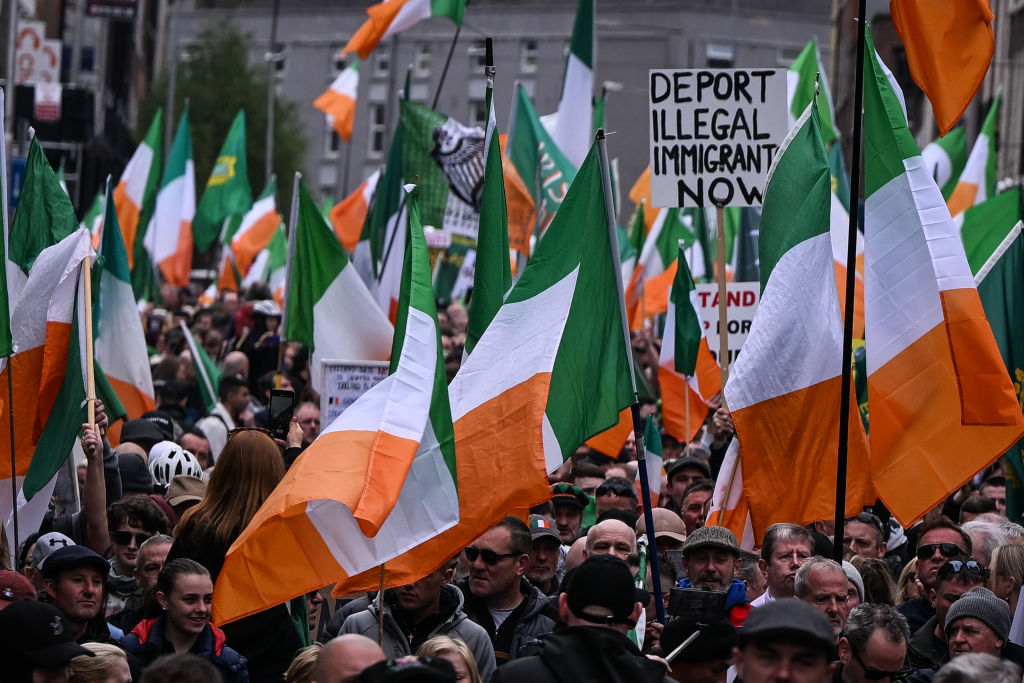Over the weekend, elections were held across Europe to elect MEPs, with the key trend being the success of populist Right-wing candidates across the continent. Ireland, home to a growing grassroots anti-immigration protest movement, held local elections concurrently with the European votes, offering a useful sample size to test the mood of the nation. Will we maintain our reputation as “keen Europeans” in this new and different way?
The elections provided some eye-catching results. In the working-class areas of Dublin, figures directly involved in or associated with the organisation of the anti-immigration protest movement had material success. The biggest win was that of Malachy Steenson, recognised as the key mover behind the “East Wall Says No” protest, elected in the North Inner City. Meanwhile, Gavin Pepper, a similar figure, was elected in a different Dublin constituency.
Where candidates just missed out on being elected, the Achilles heel proved to be transfers. Ireland’s system can be hard to understand for those used to first-past-the-post, but this essentially means that unless a candidate is popular enough to top the poll, they are reliant on transfers from other parties’ voters to get over the line. If their brand is toxic outside their most dedicated supporters, then despite securing a decent proportion of first preferences they will miss out.
The reaction of the largest parties was an illustration of the strangeness of the election. Fine Gael (FG) and Fianna Fáil (FF), two of the three coalition partners and the two historically largest parties in Ireland, lost vote share overall and Sinn Féin (SF) gained ground. Yet because of the black mood around the government over the last few months, this was seen as a moderate success for FF, a big success for FG, and an absolute disaster for SF.
The Sinn Féin perspective is worth digging into. The party has polled as high as 35% nationally since the last election was held, but has seen its vote decline in polling to just above 20% due to a perceived flip-flopping on immigration. Its total vote share in this election should be around 12% which will be seen as proof that immigration is the fatal flaw in its coalition, highlighting the difference in values between its working-class and middle-class voters.
An important caveat is that this was a close replication of Sinn Féin’s local elections performance of 2019 — eight months later it went on to sweep the country with a stunning general election result that made it the biggest party in the Dáil. Party leaders will certainly be telling themselves that this is merely a continuation of an unfortunate pattern in local versus general elections.
The ultimate outcome of this mixed bag of results is that the election functions as a distorted mirror, in which every participant can see the result they want. It did not prove to be a breakthrough for members of the populist nationalist Right in Ireland, but they got their collective foot in the door. No one should underestimate the psychological impact of the National Party — the group that has done more than any other to get the phrase “Ireland belongs to the Irish” into the national consciousness — successfully getting a candidate elected as it did in Dublin. It may not be part of a wave, but it matters.
Perhaps the most resonant image from the election will be a red-faced and teary Malachy Steenson being bounced at not-quite-shoulder height as his results came through. What is the lesson the insurgent forces in Irish politics can take from his election? If you select a candidate who has been seen to do something for your constituents on a subject they care about that is being ignored by the powers that be, you can succeed. “Long-suffering community activist gets elected in working-class area” — the messages of this election were muddled, but surely that’s a result that even Left-wingers can get behind.











Join the discussion
Join like minded readers that support our journalism by becoming a paid subscriber
To join the discussion in the comments, become a paid subscriber.
Join like minded readers that support our journalism, read unlimited articles and enjoy other subscriber-only benefits.
Subscribe